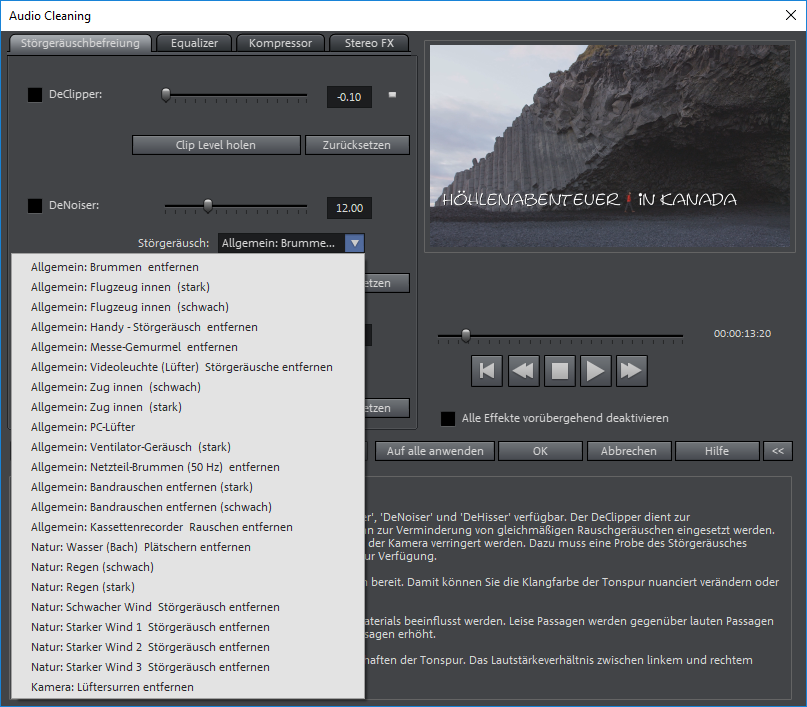28 January 2022
Instant help for audio issues

Wind noise despite the use of a deadcat, camera hum and clipping are just some of the audio problems that can crop up during video recording. But with the right software, it's easy to fix them. Here, we'll show you how.
1. Hum, hissing and other kinds of noise
Many cameras emit a specific, very low humming noise. Some video editing programs can be used to filter this out. Movie Studio and Video Pro X by MAGIX also offer an audio cleaning function with the three effects "DeClipper", "DeNoiser" and "DeHisser" (shortcut: ALT + A).
To remove humming, select the "DeNoiser" and then the option "General: Remove humming". You can also select other continuous noise – such as airplane noise, background noise at a trade fair, fan whirring, rain, water splashes, cell phone interference or wind noise – and remove or at least reduce it. Under the advanced options, you can record individual noises and store them as a definition in order to identify and reduce these types of noise at a later point. The fader in this effect category can also be used to adjust the degree of attenuation.
The "DeHisser" corrects consistent noise, for instance in analog recordings. Use the fader to set optimal levels for identifying and filtering out noise.
The "DeClipper" can restore cut-off signal peaks in distorted audio material. You can also have the program adjust the clip level automatically. The higher the quality of the original material, the better the results with the "DeClipper". Basically, the more distorted and clipped the audio is, the more difficult it is to restore it.

2. Speech intelligibility
The equalizer is the best tool for improving the clarity of speech. The EQ can be found in the "audio cleaning" section in Movie Studio and Video Pro X by MAGIX. You can use the 10-band EQ to decrease the bass and boost highs – doing so will make speech clearer and more intelligible.
3. Uniform sound
If your video switches between loud and quiet sections, you can use high-quality tools to match them without loss in quality. One such tool is the compressor function, which can be found in the "audio cleaning" section in Movie Studio and Video Pro X by MAGIX. The compressor creates a uniform sound by lowering the level of loud sections. It then makes the overall volume louder, reducing the difference between loud and quiet sections. The compressor is particularly useful for speech recordings. Audio from external sources does not usually require additional editing after the compressor is used.
4. Selected noise
Crackling or similar noise that only occurs now and again cannot be removed automatically. It needs to be cut out. When doing this, it's essential to ensure that this does not create a gap in the audio. It's best to patch gaps with an audio object that only contains neutral room sound. Alternatively, you can eliminate crackling by lowering the volume curve at precisely this point, and then immediately increasing it back to the normal level.
Next article >
Artist Interview: Pawel Piatek
< Previous article
Interview with Eckhard Stoll - the man behind multicam mode